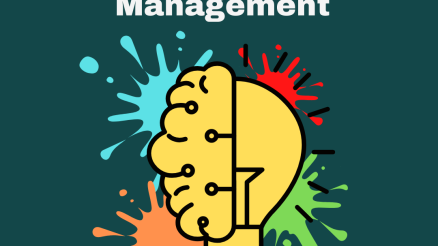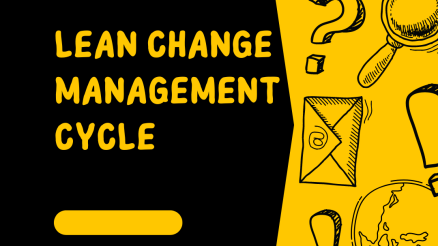Enterprise Resource Planning (ERP) systems are used by organizations looking to improve their operations and improve efficiency.
But implementation of an ERP system faces many challenges, especially when it comes to managing change within the organization.
ERP change management involves anticipating, managing, and adapting to the impact of changes brought about by the implementation of an ERP system.
In this blog post, we will explore the best practices for ERP change management, role of ERP in change management practical tips to help organizations successfully navigate the ERP change process and realize the full benefits of their investment.
The purpose of this blog post is to provide organizations with an understanding of the importance of change management in ERP implementations and to offer guidance on best practices to successfully manage change during an ERP implementation.
The post is particularly relevant for those who are involved in the ERP implementation project, including project managers, business leaders, IT professionals, and end-users.
Let’s start reading
What is ERP?
ERP stands for Enterprise Resource Planning. It is a type of software that helps organizations manage and integrate their business processes and functions. These functions can include, but are not limited to, finance and accounting, human resources, procurement, inventory and supply chain management, customer relationship management, and project management.
An ERP system provides a centralized database and a single point of access for all of an organization’s data and processes, allowing for greater efficiency and visibility into key business operations. The goal of an ERP system is to automate and streamline an organization’s processes, reduce manual effort and errors, and provide real-time data and insights to help make informed business decisions.
Role of ERP in Change Management
ERP and change management are closely related concepts in the world of business and technology. Implementing an ERP system is a significant change for an organization and requires careful planning, execution, and management to ensure its success.
The implementation of an ERP system typically involves the reorganization of existing processes, the adoption of new technologies, and the integration of various departments and functions within an organization. These changes can have a significant impact on the organization and its employees, and if not managed properly, can result in resistance, disruption, and ultimately, failure of the ERP implementation.
Change management is the process of anticipating, managing, and adapting to the impact of changes brought about by an ERP implementation. It is critical to the success of an ERP implementation and helps ensure that the organization and its employees are prepared, engaged, and supported throughout the change process.
ERP Change Process
The stages of ERP change can vary depending on the specific implementation, but generally include the following:
Planning
This stage involves developing a clear plan for the ERP implementation, including defining project goals and objectives, identifying key stakeholders, and determining the resources and budget needed to complete the project
Preparation
In this stage, the organization prepares for the ERP implementation by conducting a thorough assessment of its current processes and systems, defining its requirements for the ERP system, and developing a change management strategy.
Implementation
During this stage, the ERP system is configured, tested, and integrated with the organization’s existing systems and processes. This stage may also involve the deployment of new hardware and software.
Go-Live
This is the stage where the ERP system is officially launched and put into production. During this stage, the organization trains its employees on how to use the system, provides ongoing support and assistance, and monitors the system for any issues or problems.
Post-Implementation
After the ERP system is fully operational, the organization will continue to monitor its performance and make any necessary changes to ensure that it meets the organization’s needs. This stage may also involve the ongoing improvement and optimization of the ERP system.
It’s important to note that the ERP change process is not always linear, and organizations may need to revisit previous stages as they move through the implementation. Effective change management can help ensure a smooth and successful transition through each stage of the ERP change process
Examples of ERP Change Management
Given below are examples ERP change management in three different sectors:
- Manufacturing company implements a new ERP system to streamline its production processes and improve supply chain management. The change management team works closely with key stakeholders to ensure that the ERP system is integrated with existing business processes and that employees are trained on how to use the new system effectively.
- A retail company implements a new ERP system to improve customer relationship management and inventory management. The change management team ensures that the ERP system is integrated with existing systems and processes, and that employees are trained on how to use the new system. Regular stakeholder surveys are conducted to gather feedback and identify areas for improvement.
- A healthcare organization implements a new ERP system to improve patient care and streamline administrative processes. The change management team works closely with key stakeholders, including healthcare providers and administrators, to ensure that the ERP system is integrated with existing systems and processes, and that employees are trained on how to use the new system effectively.
In each of these examples, the change management team works closely with key stakeholders to ensure that the ERP implementation is successful and delivers the desired benefits. By following best practices for ERP change management, organizations can ensure that their ERP implementation is successful and that the ERP system continues to meet the evolving needs of the business.
ERP Change Management Best Practices
Here are the best practices of ERP change management
Involvement of Key Stakeholders
Key stakeholders include individuals or groups who have a vested interest in the success of the ERP implementation and can impact its outcome. These stakeholders can include business leaders, employees, customers, suppliers, and partners.
Involving key stakeholders in the ERP change process helps to ensure that their needs and concerns are taken into account and that they are prepared and engaged throughout the implementation. This can help to minimize resistance to change and increase the likelihood of success. Key stakeholders can also provide valuable insights and feedback that can help to improve the ERP system and ensure that it meets the organization’s needs.
Some best practices for involving key stakeholders in the ERP change management process include:
- Engaging key stakeholders early in the process to ensure that their needs and perspectives are taken into account from the outset.
- Communicating regularly with key stakeholders to keep them informed of progress, address any concerns or questions, and provide updates on the ERP implementation.
- Providing training and support to key stakeholders to help them understand the ERP system and how it will impact their roles and responsibilities.
- Encouraging feedback and input from key stakeholders to identify any potential problems or areas for improvement.
- Building a supportive and inclusive culture that encourages collaboration and engagement among key stakeholders.
Effective Communication
Communication helps to ensure that all stakeholders are informed about the ERP implementation, understand its purpose and impact, and are prepared for the changes that it brings.
Effective communication also helps to build trust and engagement among stakeholders, minimize resistance to change, and foster a culture of transparency and collaboration. Some best practices for effective communication during an ERP change management process include:
- Developing a clear and comprehensive communication plan that outlines the objectives, key messages, and target audiences for each stage of the ERP implementation.
- Ensuring that communication is timely, accurate, and relevant to each stakeholder group.
- Using multiple channels of communication, such as face-to-face meetings, email, webinars, and online forums, to reach stakeholders and encourage feedback and engagement.
- Providing training and support to help stakeholders understand the ERP system and how it will impact their roles and responsibilities.
- Encouraging open and transparent dialogue among stakeholders to identify any potential problems or areas for improvement.
Continuous Training and Support
Continuous training and support is another important aspect of ERP change management. With any significant change to an organization’s systems and processes, it’s important to provide employees with the training and support they need to adopt and effectively use the new ERP system.
Effective training and support can help to reduce resistance to change, increase employee engagement and productivity, and ensure that the ERP system is being used to its full potential. Some best practices for providing continuous training and support during an ERP change management process include:
- Providing comprehensive and ongoing training to help employees understand the ERP system and how it will impact their roles and responsibilities.
- Using a variety of training methods, such as online training modules, hands-on workshops, and one-on-one coaching, to reach employees and meet their learning needs.
- Providing easy access to online resources, such as user guides and FAQs, to support employees as they use the ERP system.
- Encouraging employees to ask questions and provide feedback to identify any potential problems or areas for improvement.
- Establishing a support team or helpdesk to provide ongoing assistance and support to employees as they use the ERP system.
Flexibility and Adoptability
The business landscape is constantly changing, and organizations need to be able to adapt to new challenges and opportunities. An ERP system that is flexible and adaptable can help organizations to respond to these changes and continue to meet the evolving needs of the business.
Some best practices for promoting flexibility and adaptability in an ERP change management process include:
- Choosing an ERP system that is flexible and can be easily modified to meet changing business requirements.
- Encouraging a culture of continuous improvement and innovation to ensure that the ERP system continues to evolve and meet the needs of the business.
- Regularly reviewing and updating the ERP system to ensure that it remains relevant and effective in meeting the needs of the business.
- Encouraging employee involvement and feedback to identify any potential problems or areas for improvement.
- Building a supportive and inclusive culture that encourages collaboration and engagement among all stakeholders.
Evaluating and Monitoring Progress
Regularly monitoring and evaluating the progress of the ERP implementation can help organizations to identify any potential problems or areas for improvement and make necessary changes to ensure the success of the implementation.
Some best practices for evaluating and monitoring progress during an ERP change management process include:
- Setting clear and measurable goals and objectives for the ERP implementation.
- Regularly tracking key metrics and KPIs, such as adoption rates, user satisfaction, and business process improvements, to measure progress.
- Conducting regular stakeholder surveys and user focus groups to gather feedback and identify areas for improvement.
- Establishing a robust and comprehensive change management program that includes regular reviews and updates to ensure that the ERP system remains relevant and effective.
- Building a culture of continuous improvement and innovation to ensure that the ERP system evolves to meet the changing needs of the business.
Final Words
The role of ERP in change management is crucial for organizations that are looking to successfully implement a new ERP system. By involving key stakeholders, promoting effective communication, providing continuous training and support, promoting flexibility and adaptability, and evaluating and monitoring progress, organizations can ensure that the ERP implementation is successful and delivers the desired benefits.
It is important to recognize that ERP change management is not a one-time event, but rather a continuous process of improvement and adaptation. Organizations should embrace change management as a critical aspect of their ERP implementation and ongoing business operations.



